Похожие презентации:
Department of anatomy. Занятие №12
1.
Department of anatomyPopulation
polymorphism
and
geographic
variability of
Homo sapiens
Ph.D. Nikel V.V.
M.D., Ph.D. Shuvaev A.N.
2.
Genetic polymorphismThis is the presence of several alleles in the locus with
sufficient frequency for their fixation in the population
An allele is one
of several
sequences of a
given gene
3.
Continuous variability: PigmentationClustered
melanocytes
Singular
melanocytes
4.
Continuous variability: Hair color5.
Continuous variability: Hair color6.
Continuous variability: Eyes color7.
Continuous variability: Hair texturecoarse
straight
straight
(fine)
straight
wavy
wavy
curly
tight curly
kinky
peppercorn
http://humanphenotypes.net/metrics/texture.html
curly
8.
Continuous variability: Body hairWeak is the hair of some East-Asian Mongoloids where beard growth
is particularly sparse. In Africa, most of the northern savannah
populations (Sudanids, Nilotids, Ethiopids) show very little hair, as
well as Malagasy. In America, most groups have little hair, just like in
South-East Asia and Polynesia. African forest populations as well as
Pacifids and Huarpids of South America show stronger hair growth
weak
body hair
strong
body hair
9.
Continuous variability: BeardVery weak
Weak
Medium
Prominent Very prominent
10.
Continuous variability: Face morphologyno fold
nose-lid/
Mongolian
fold
internal/
Indian
fold
angle/
curtain/
epicanthus Hottentot
fold
(laternal)
external/
Negroid fold
hanging/
Nordic fold
Many populations in Europe, South Asia, Africa, and Australia do not
show any significant eye fold
Thickness of the lips: from thin to thick
Landgraf et al., 2013
11.
Continuous variability: NoseRidge of the nose
Flat
Incurved
Arched
Waived
Nose tip
Horizontal
Elevated
Adroped















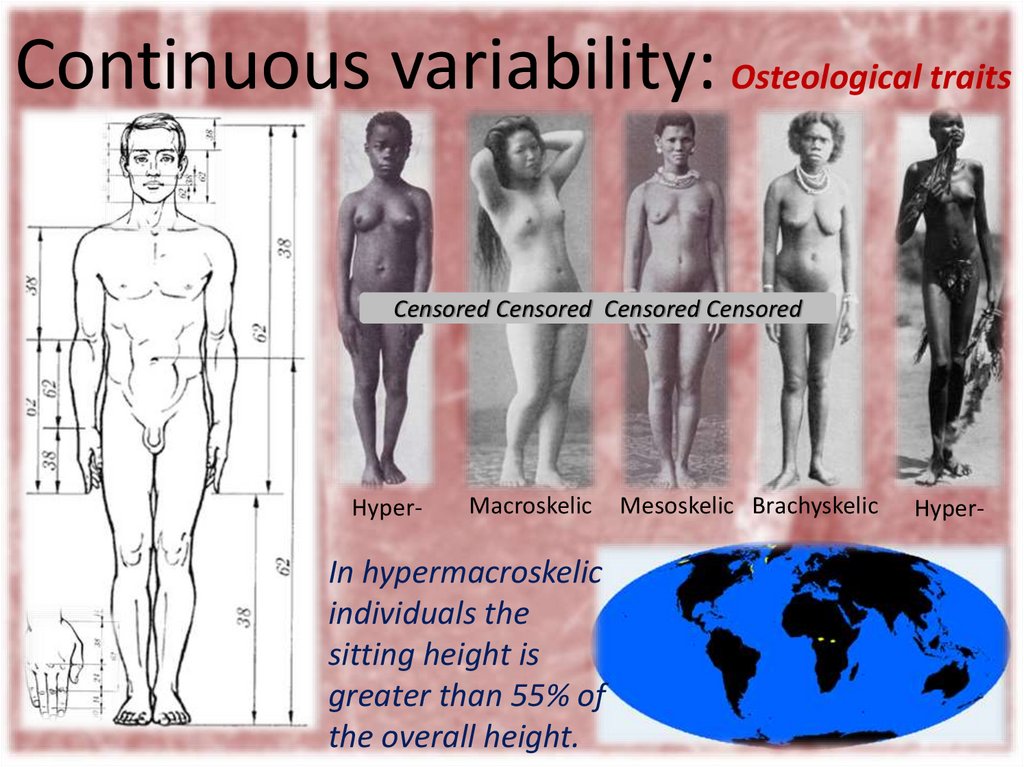


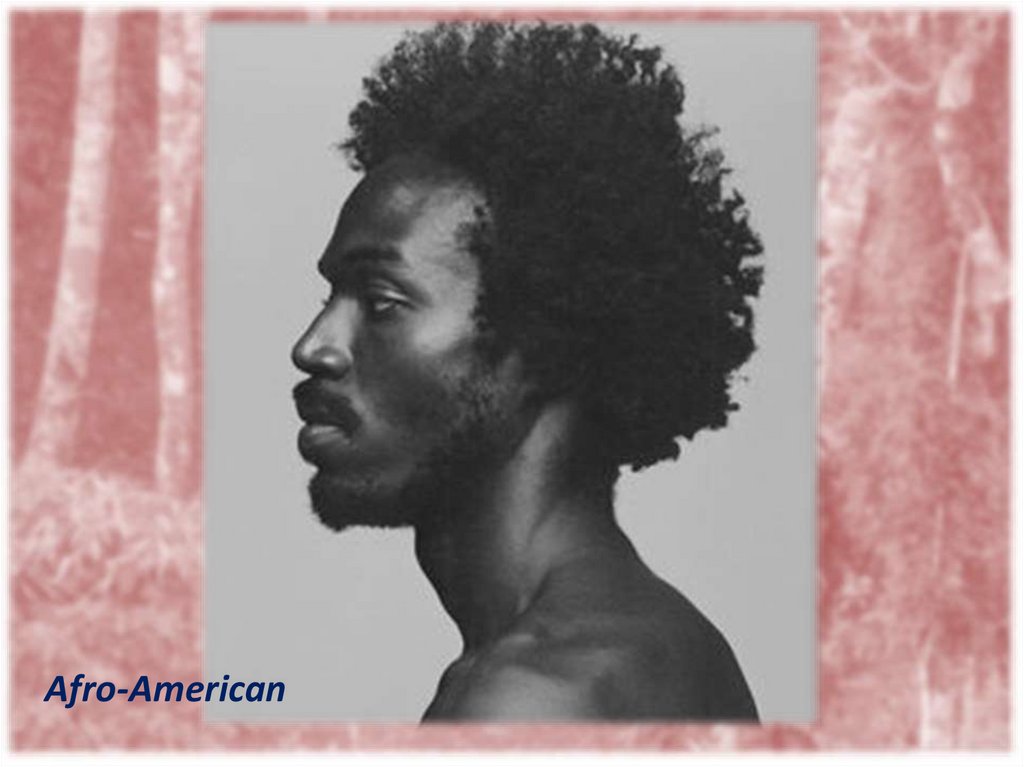
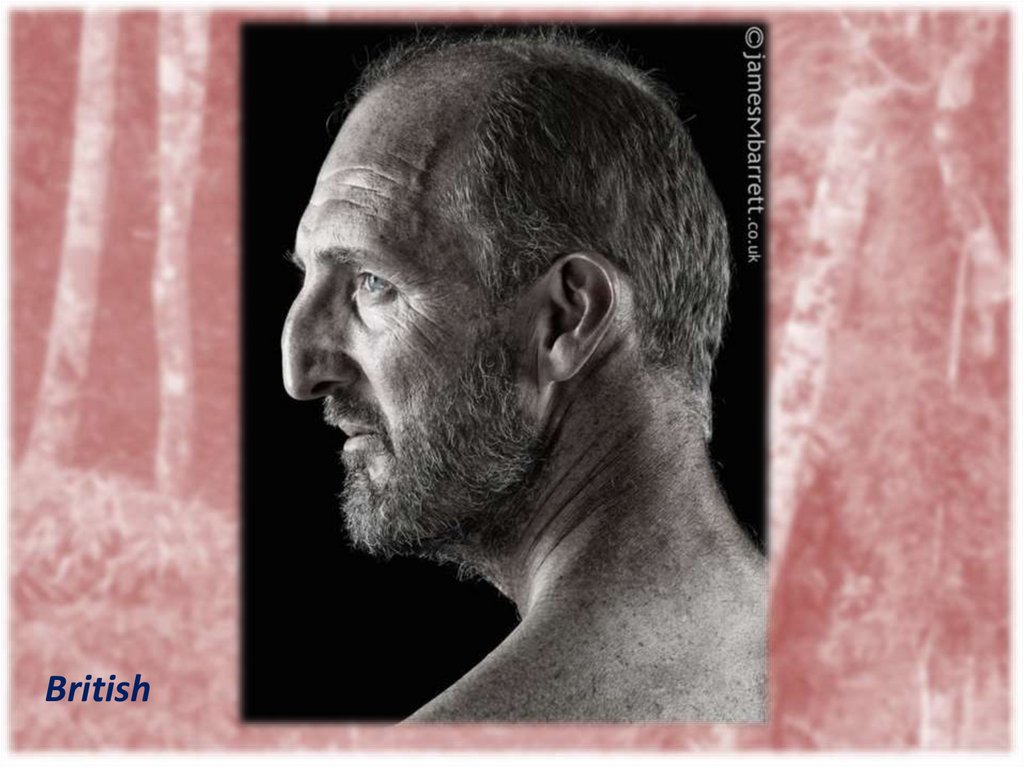
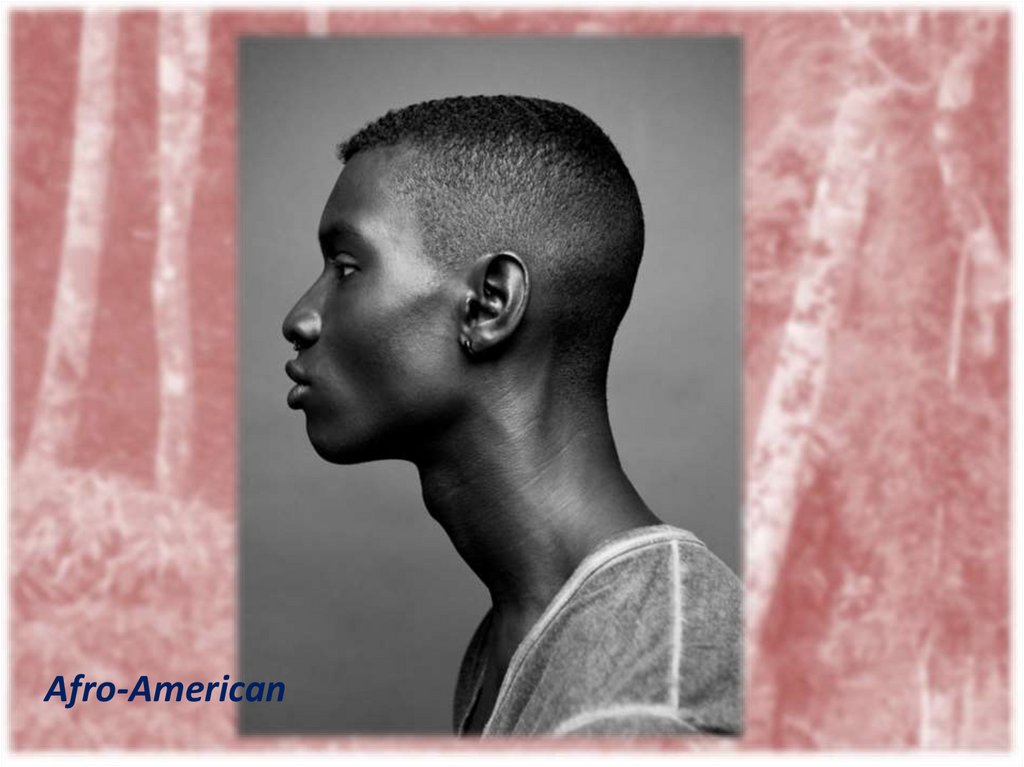
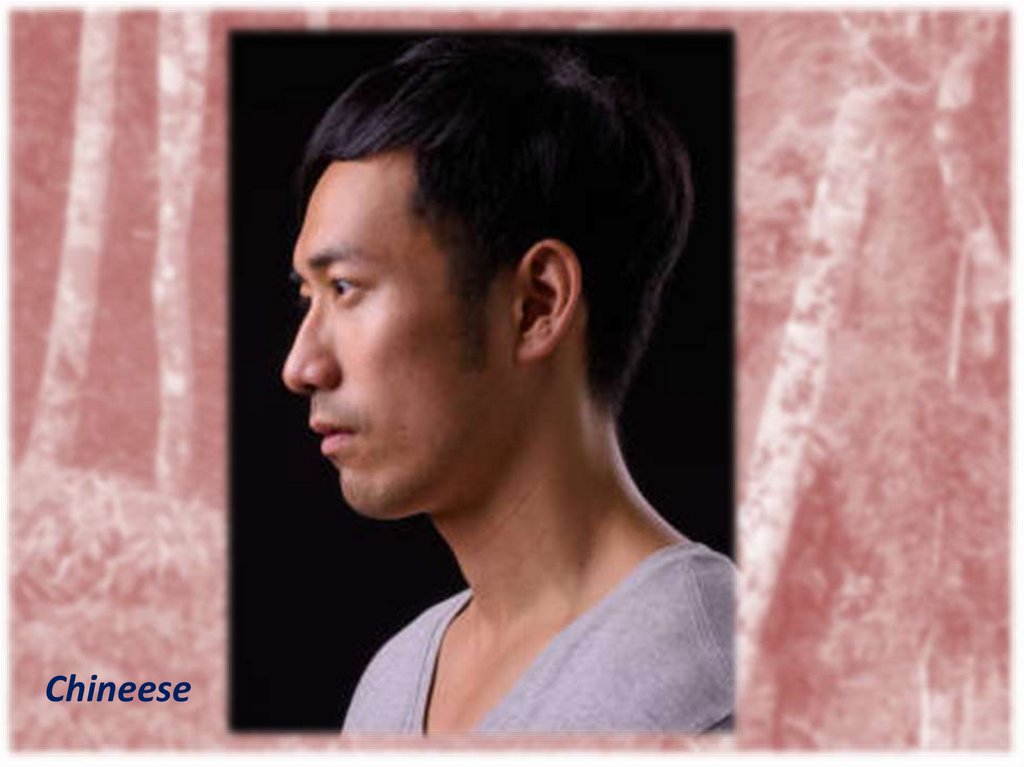
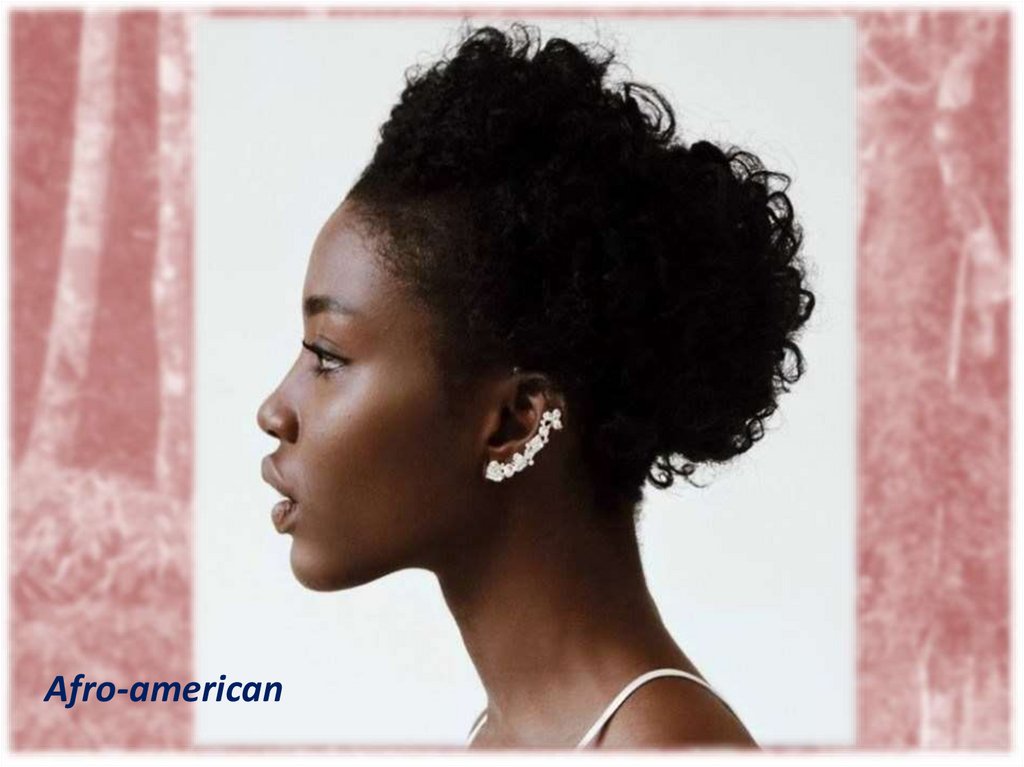


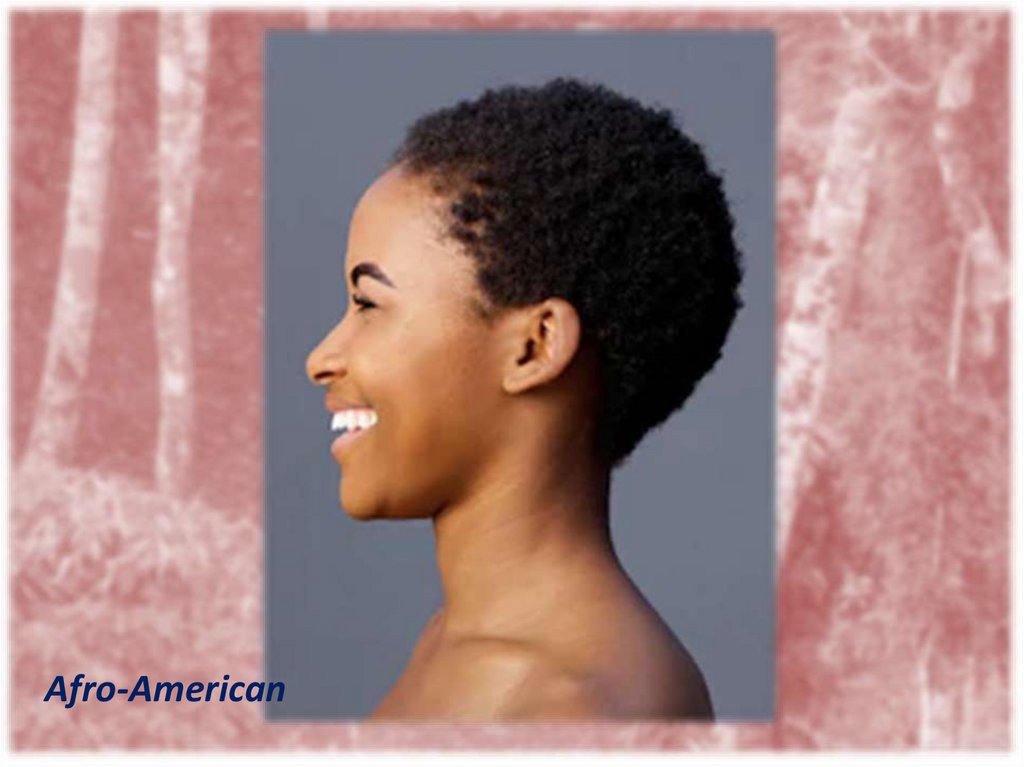

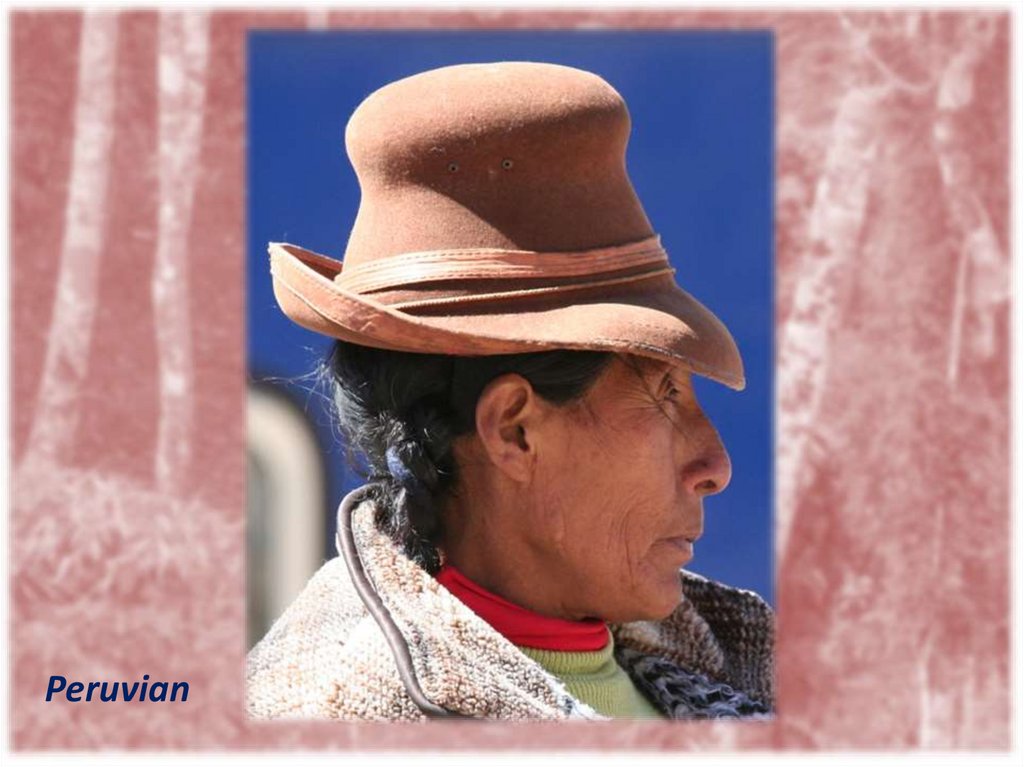
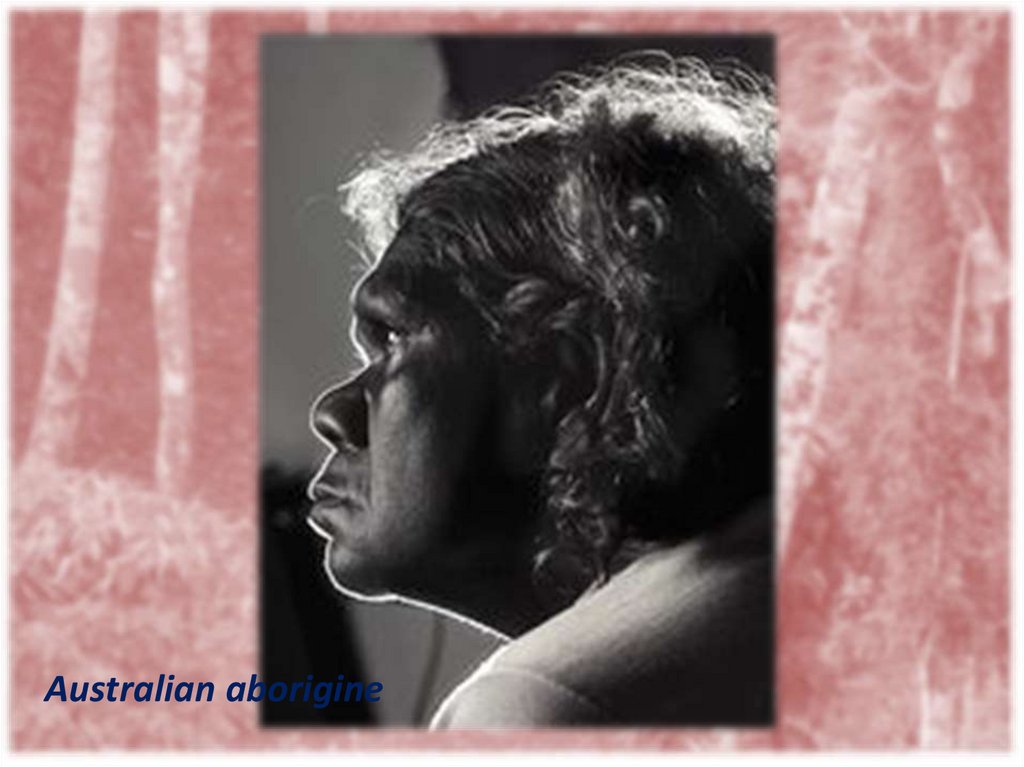
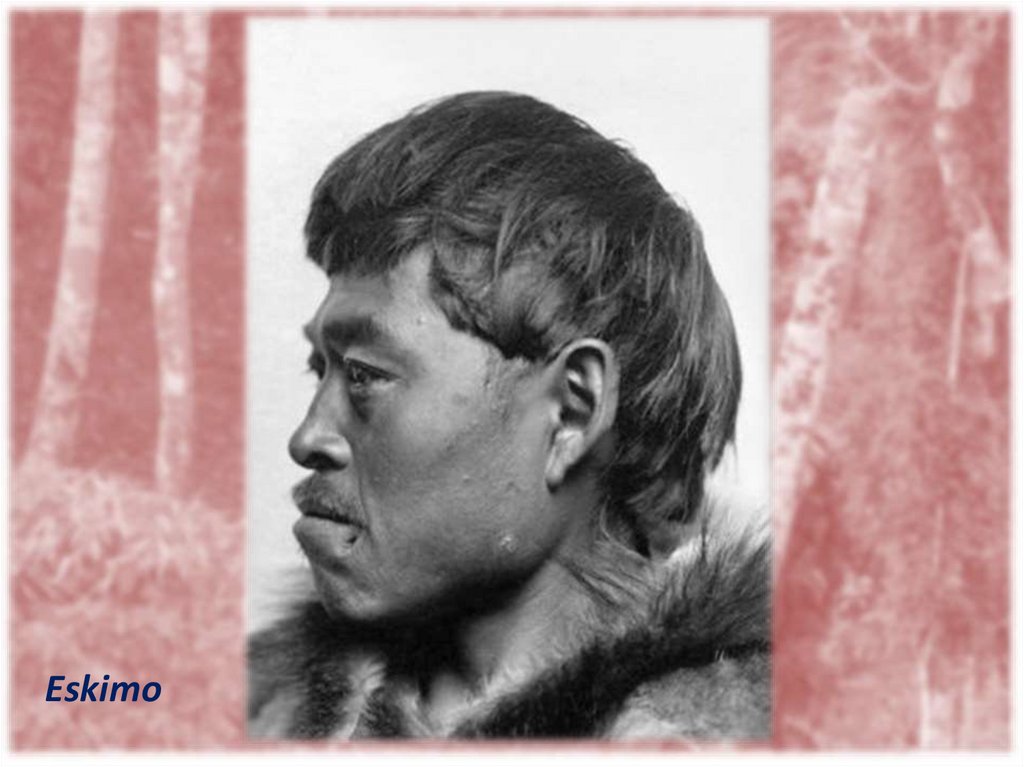
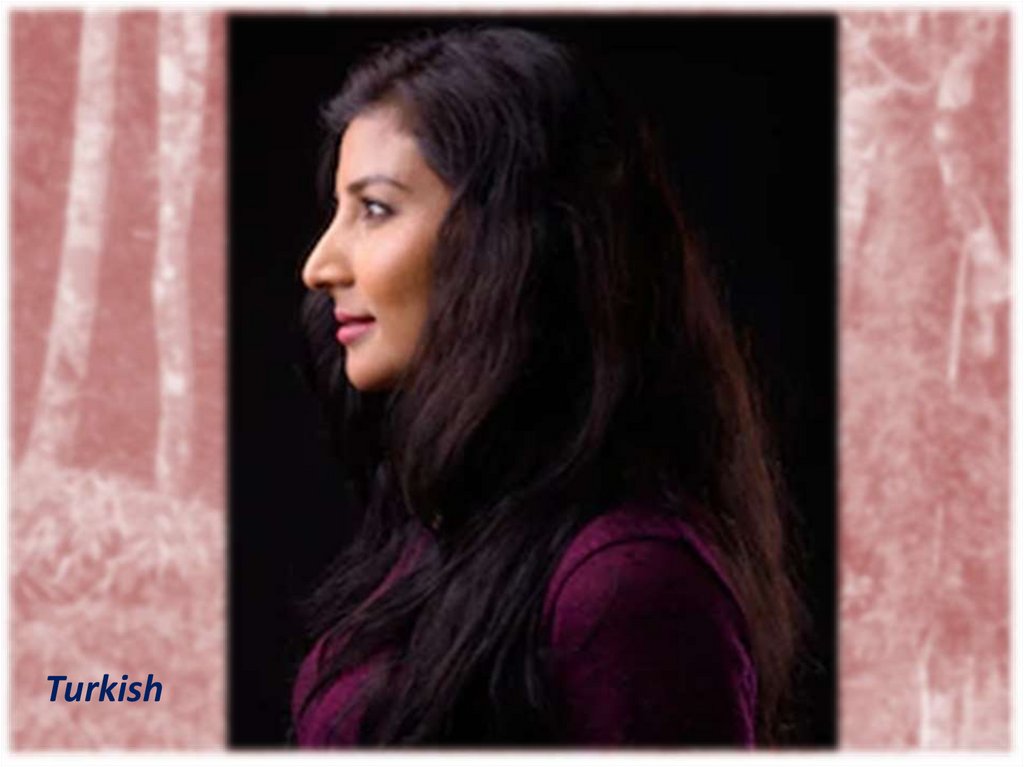
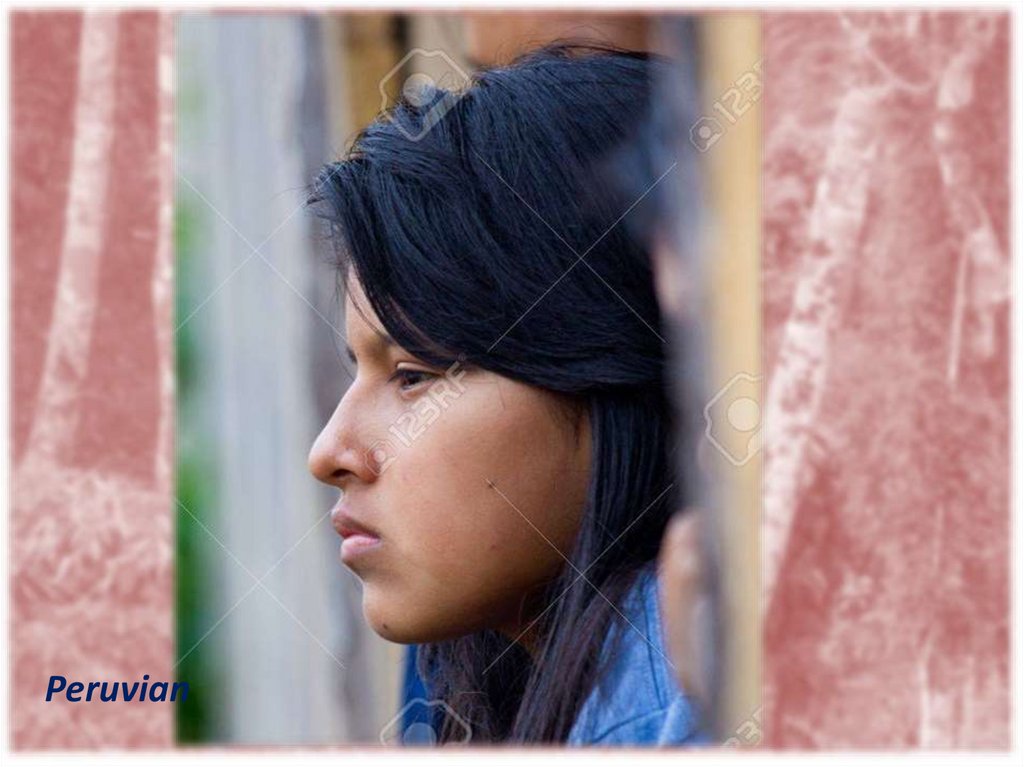
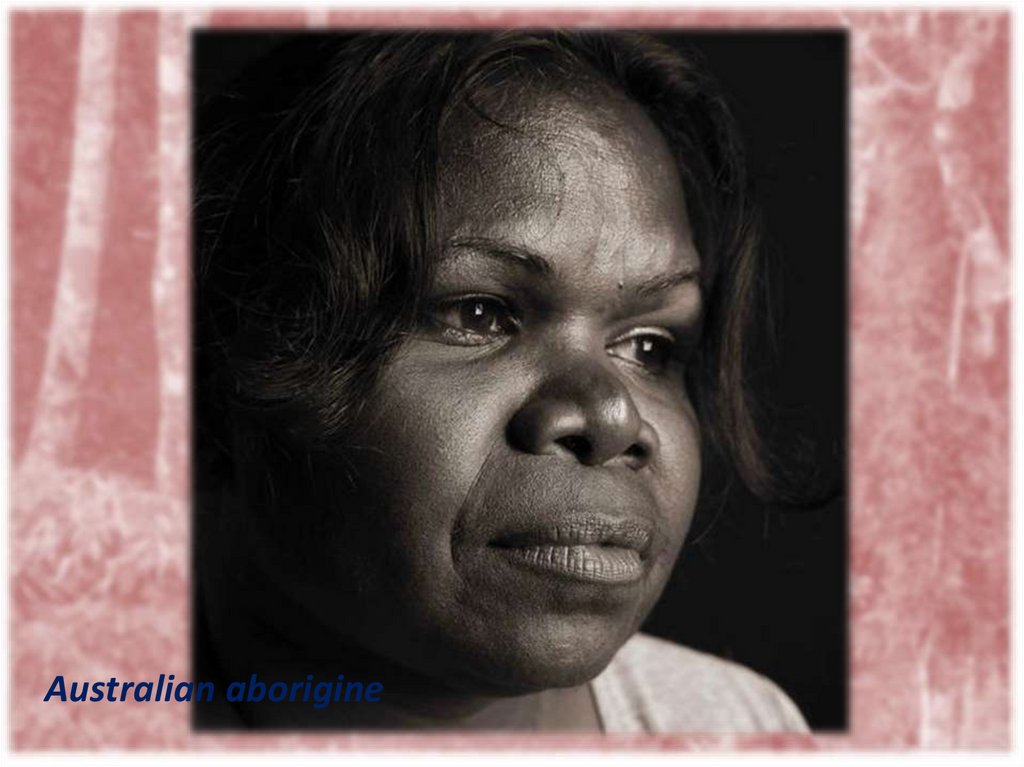

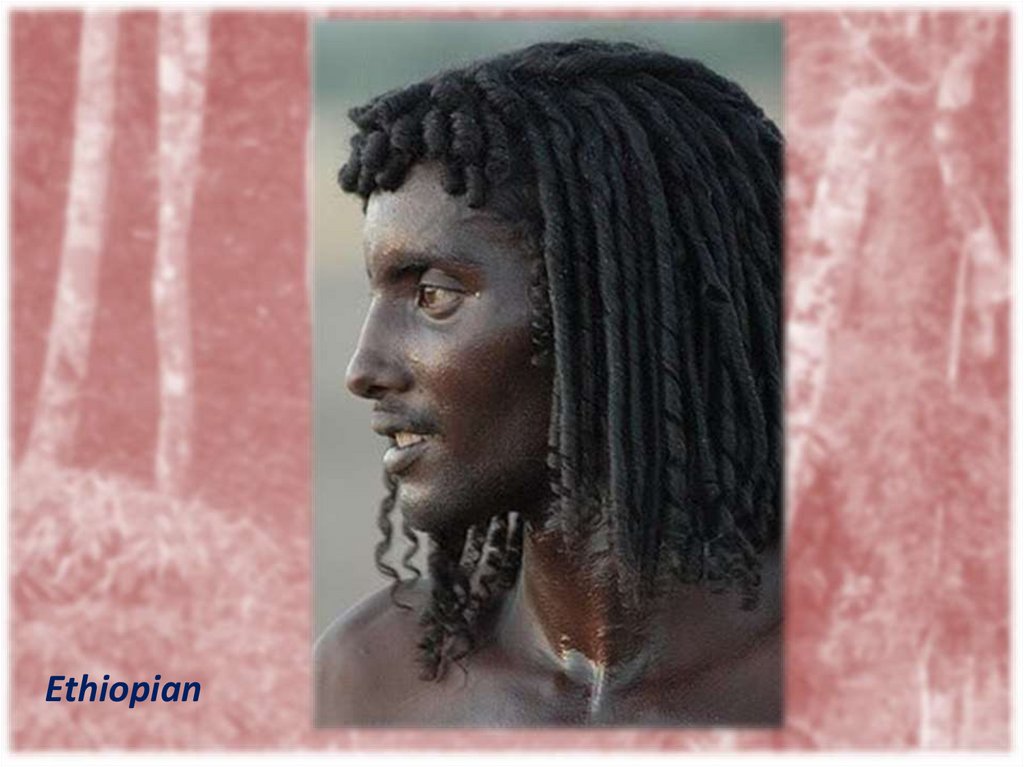


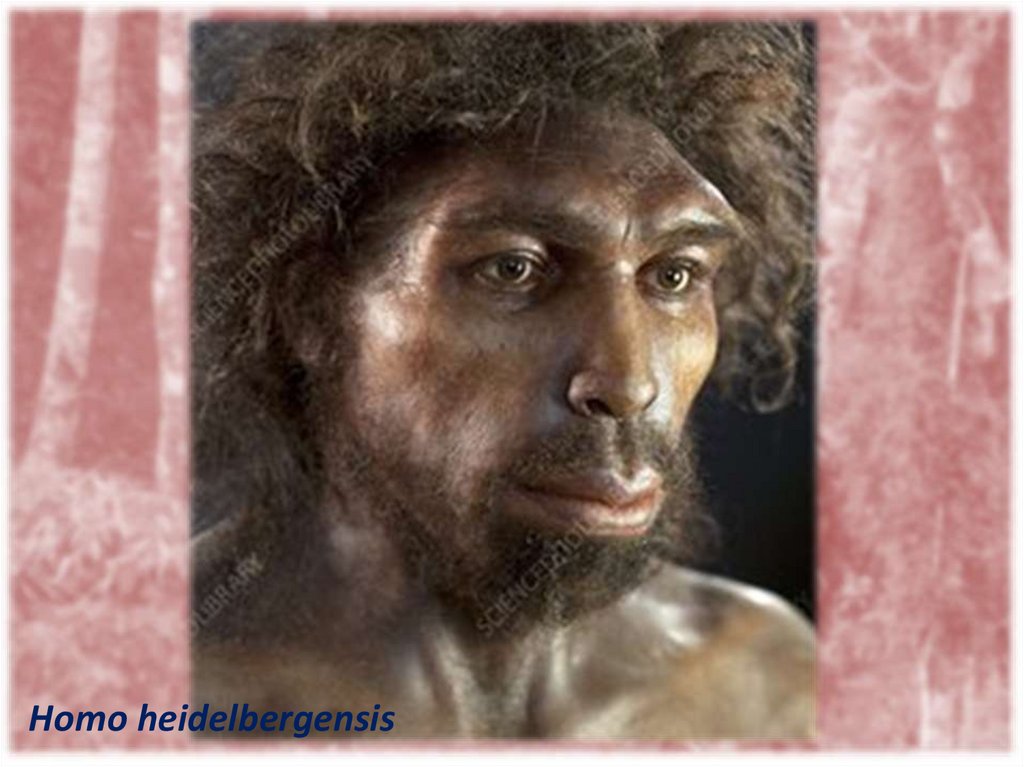

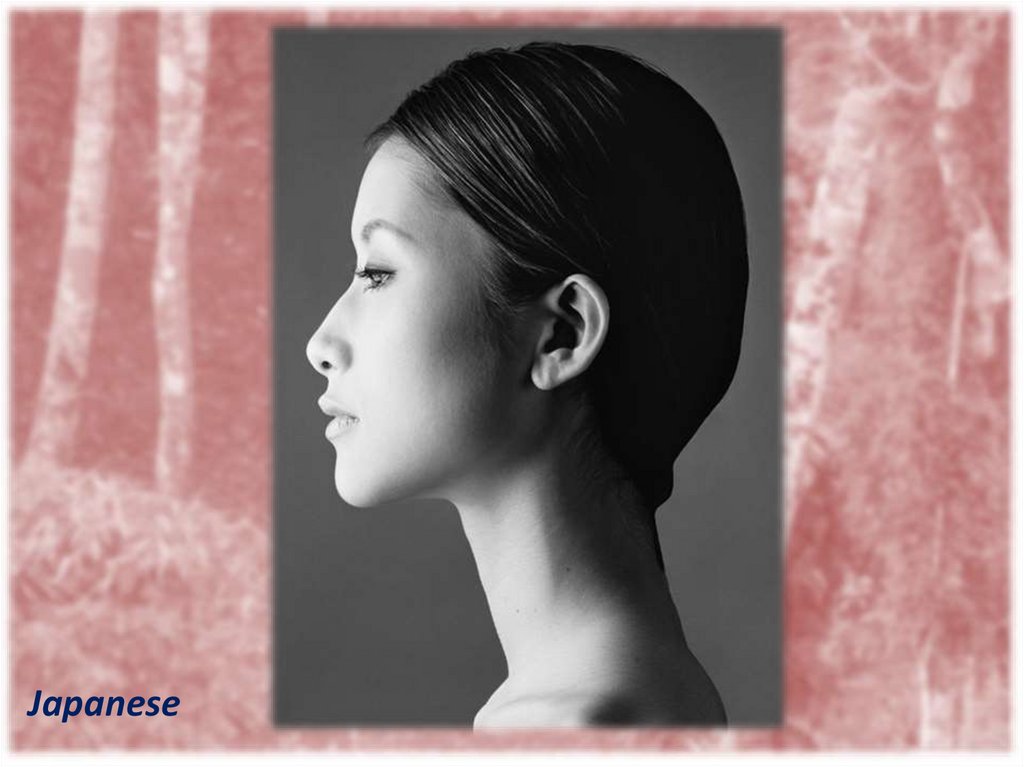
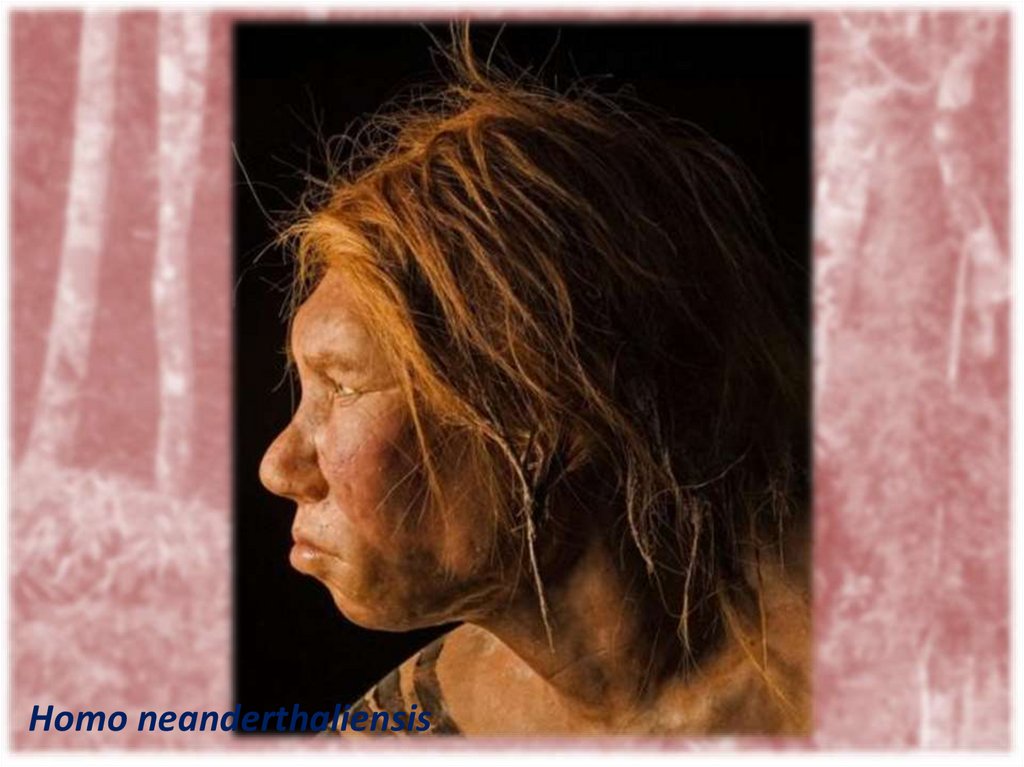
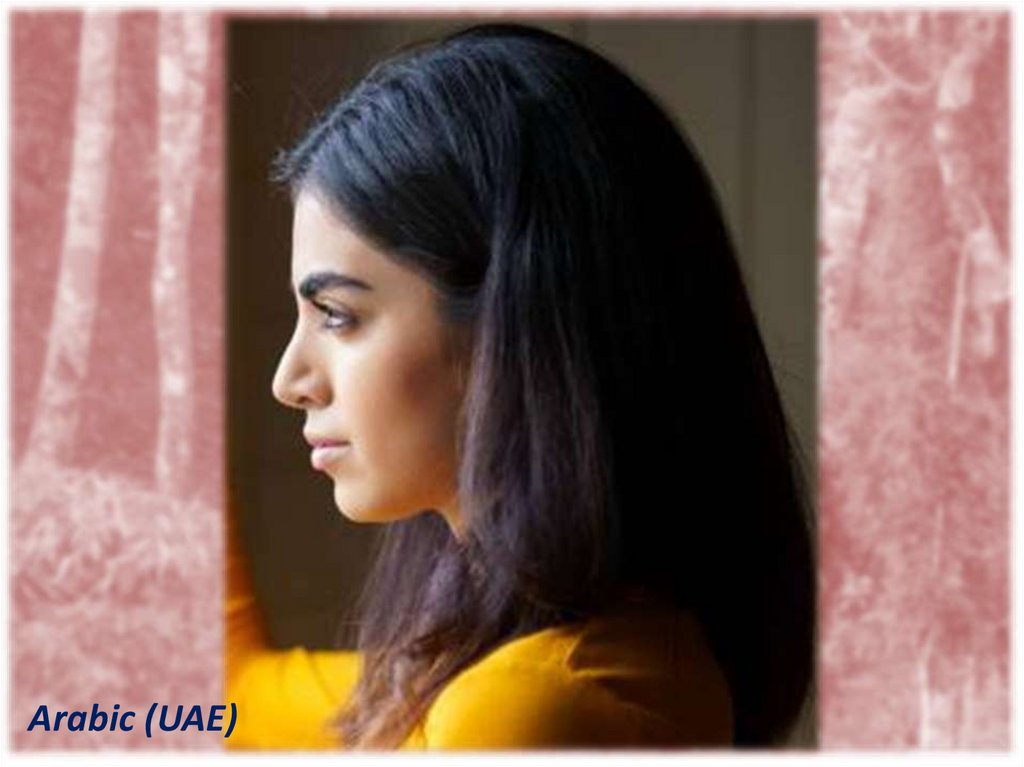
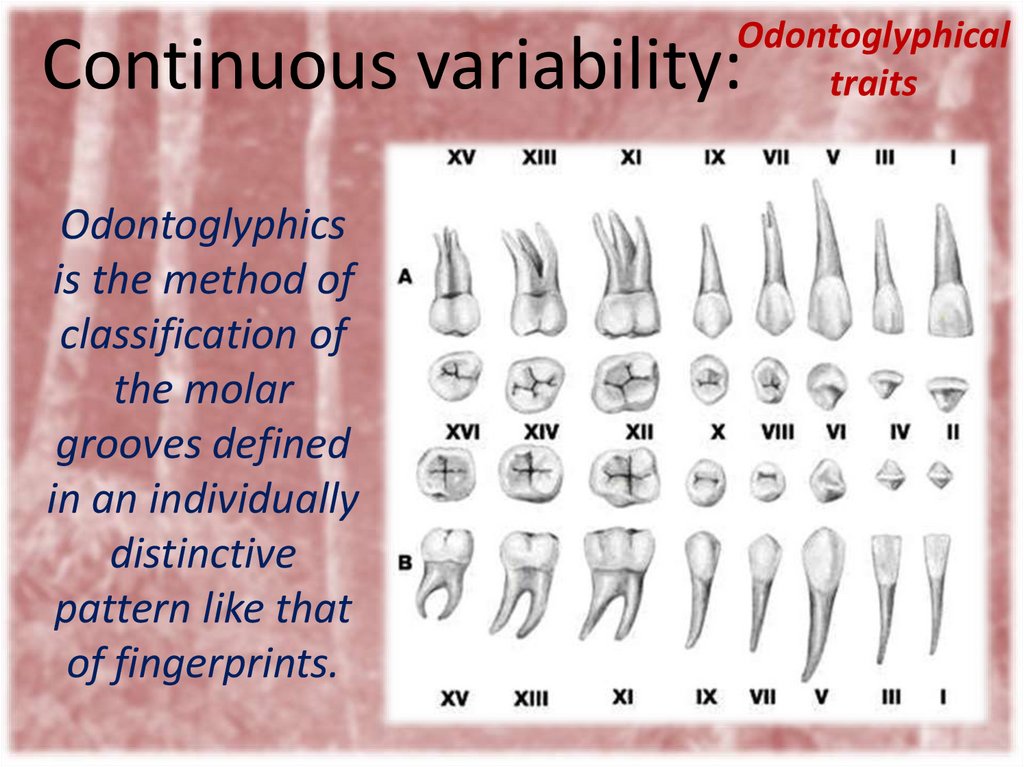
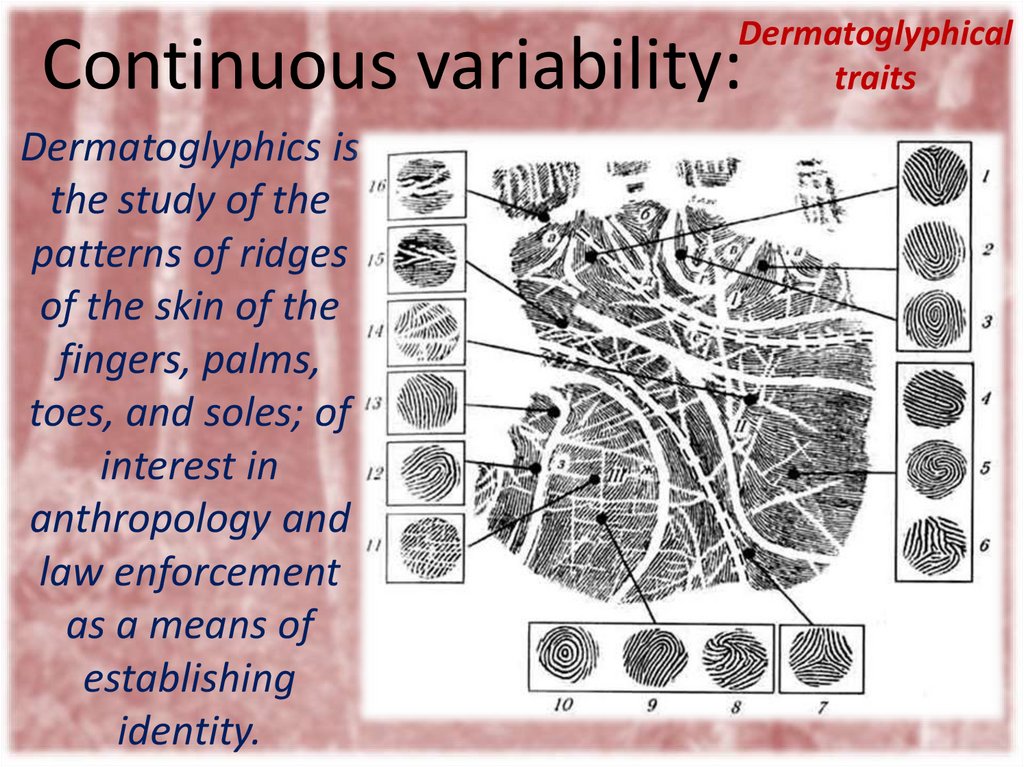
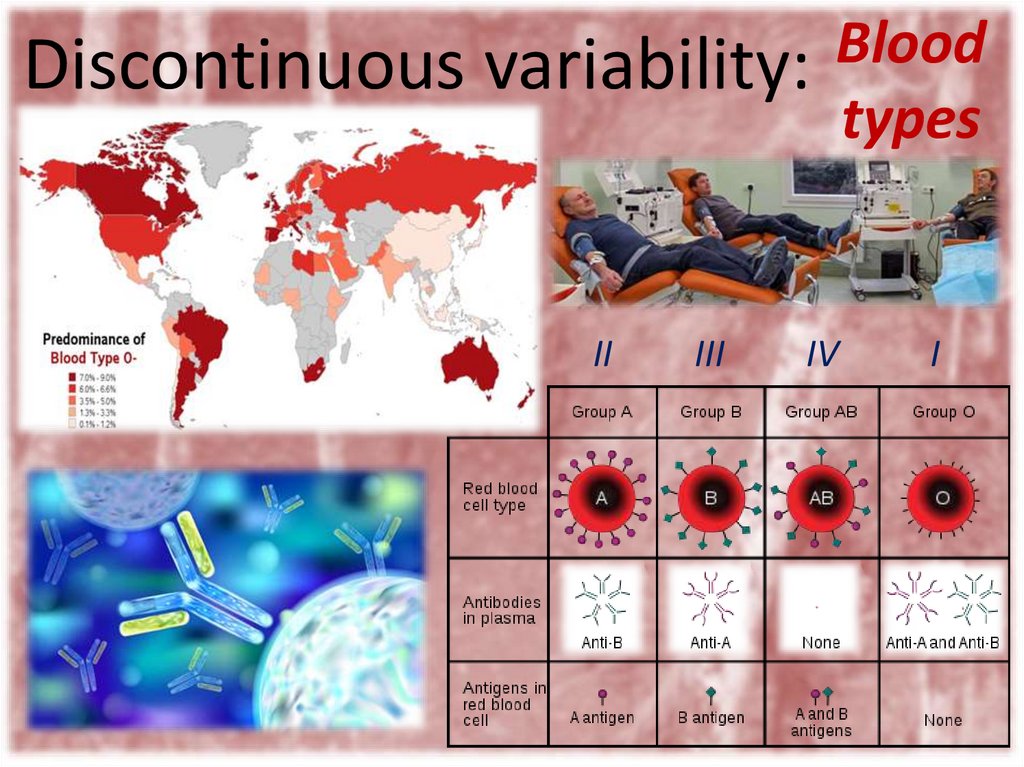
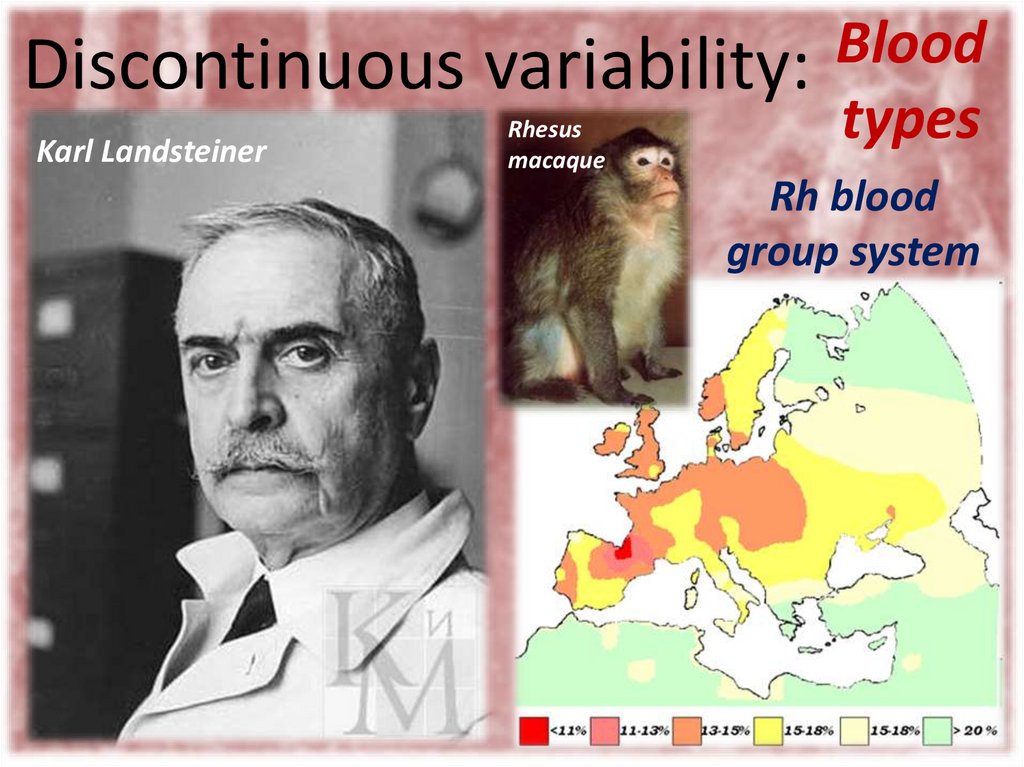
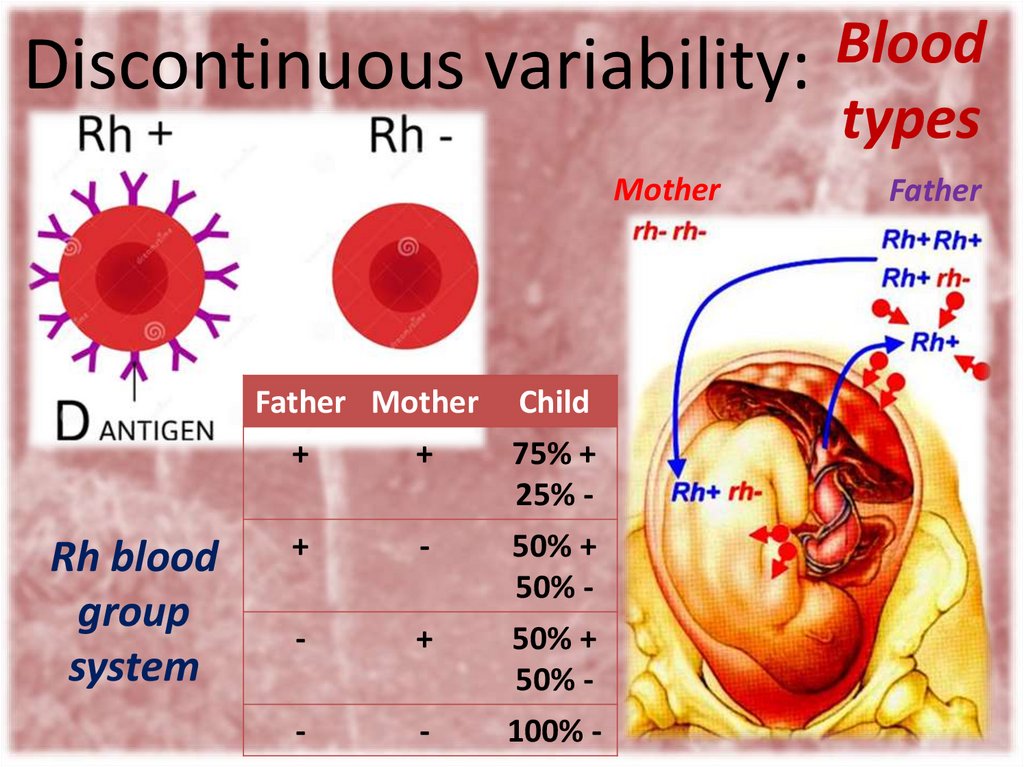
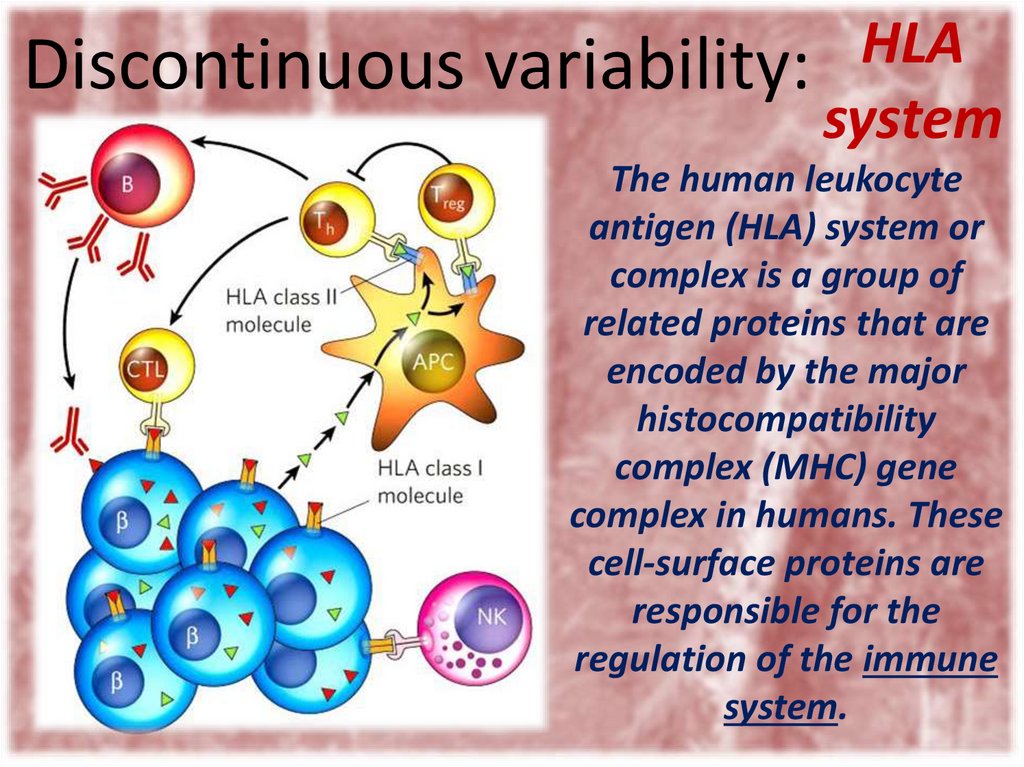
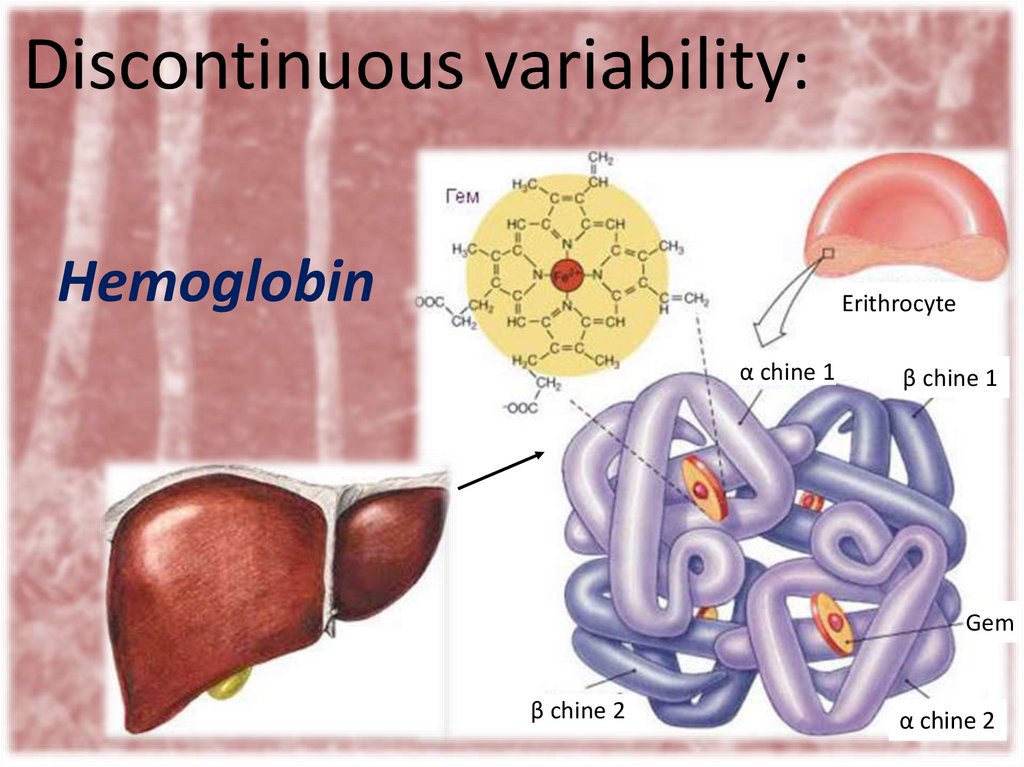
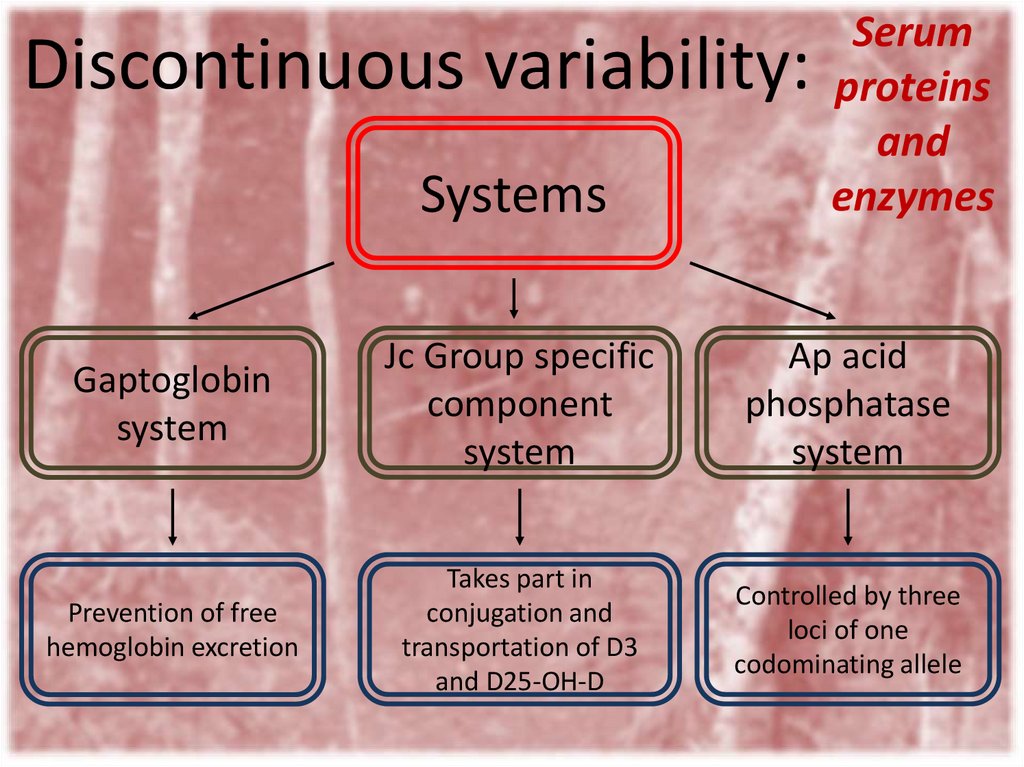
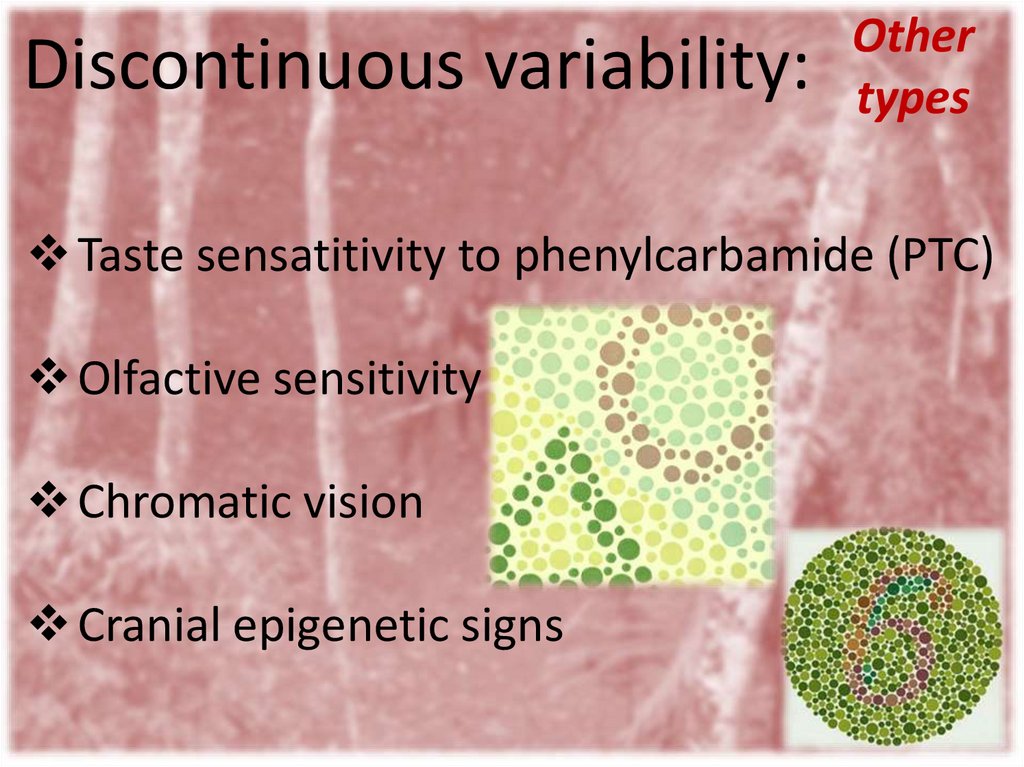
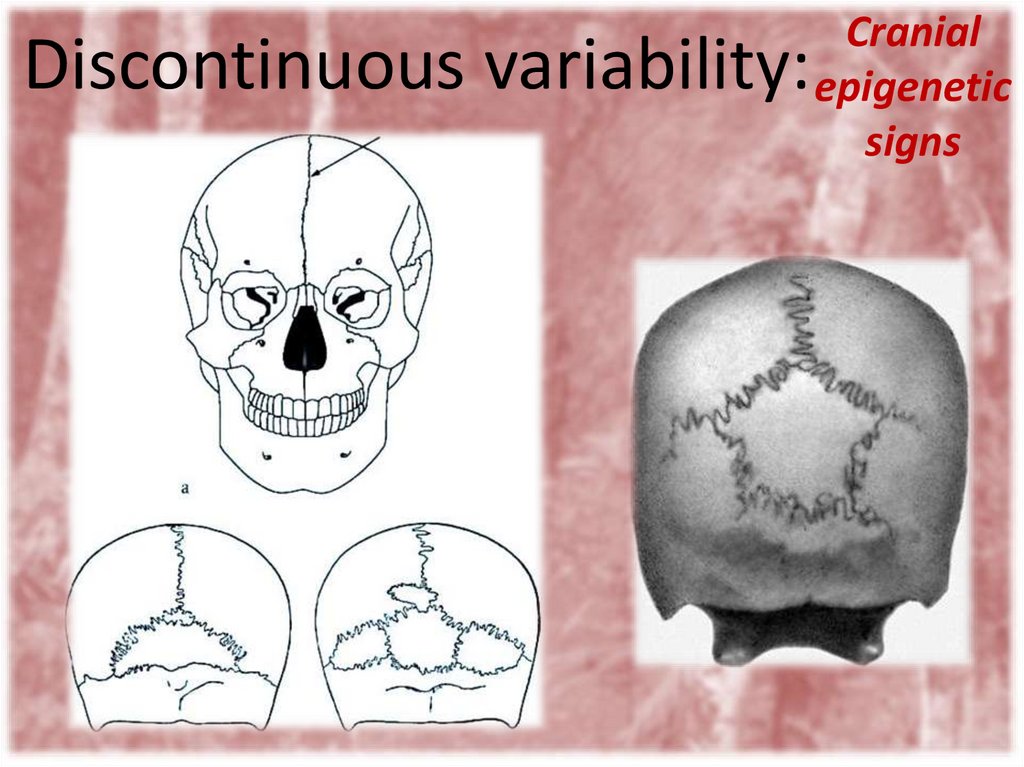
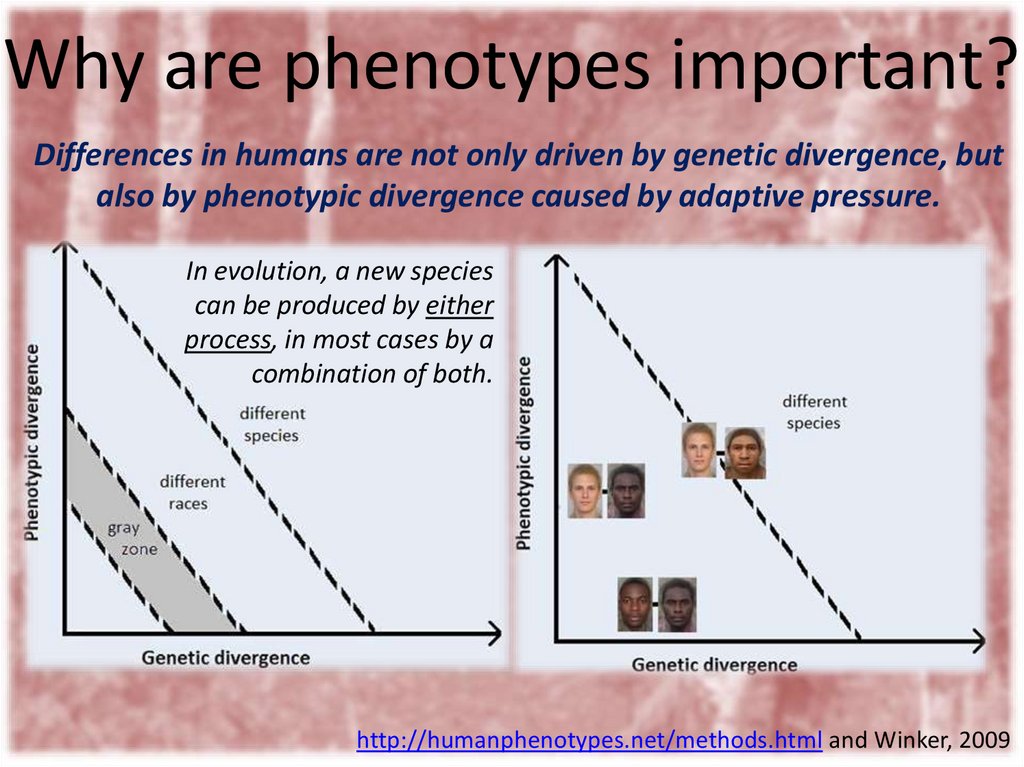
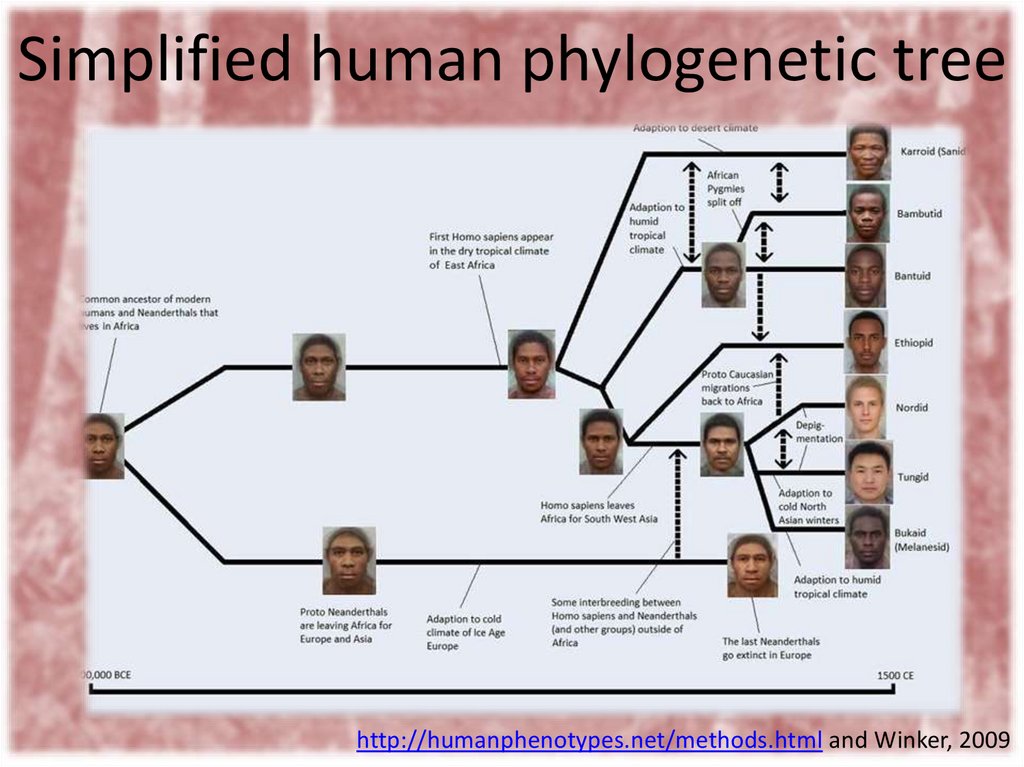
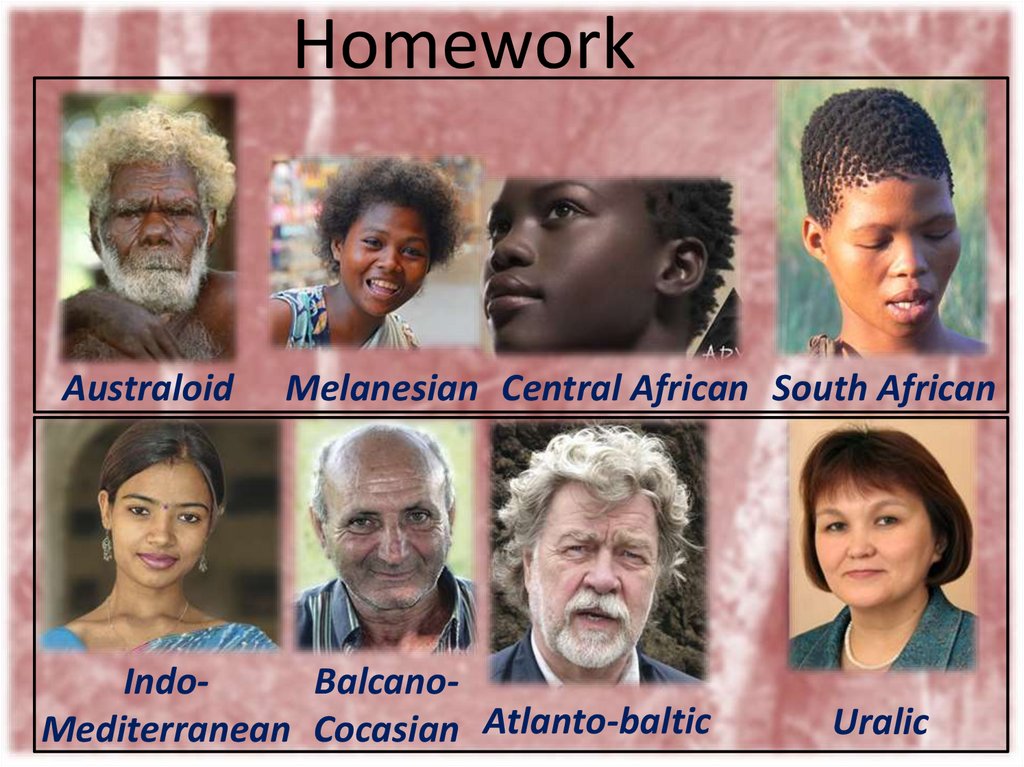
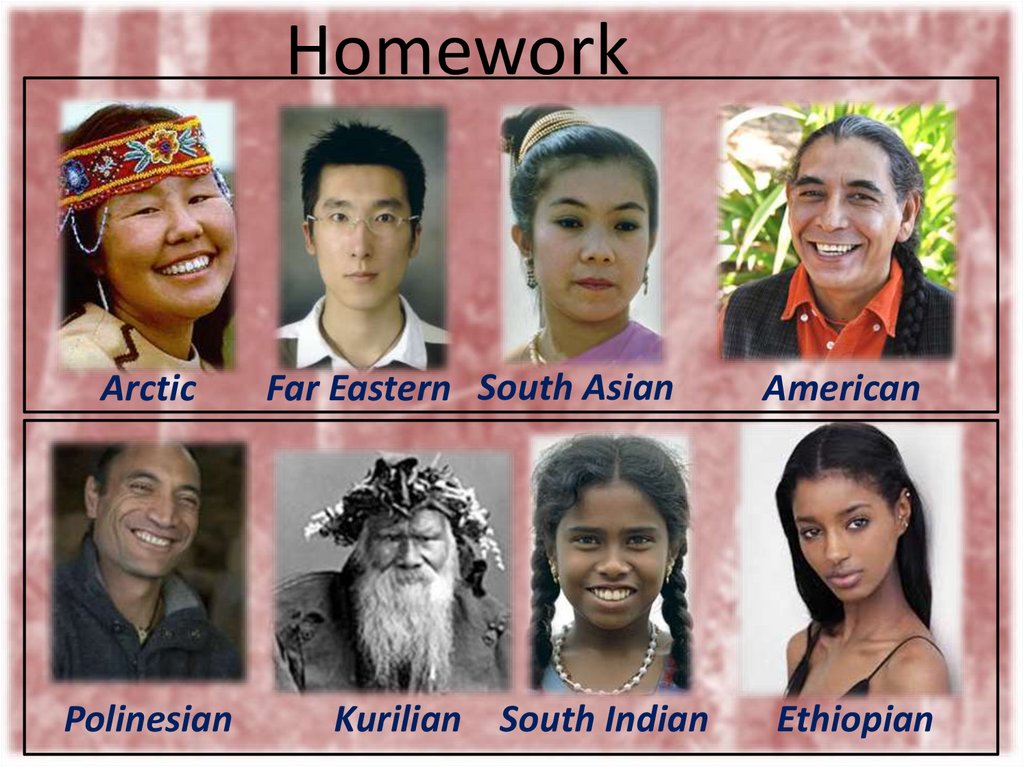
 Английский язык
Английский язык








